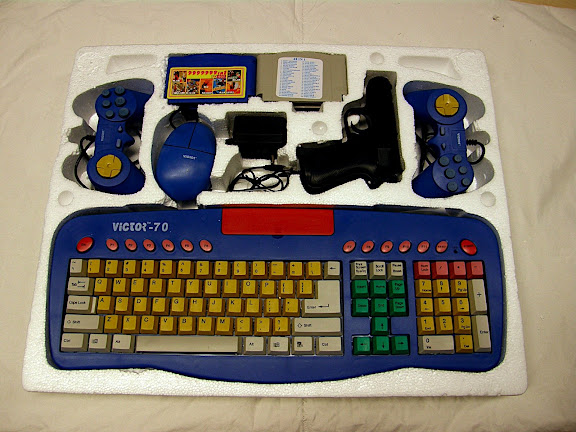
One $12-Gaming-Console Per Child?
The Famicom could help kids in developing nations.
Can a 20-year-old gaming console be the way to offer truly low-cost computing to Third World students?
An international group of designers and graduate students believe it is, saying that they believe they can modernize a 'TV computer' available for $12 on the street in India by adding Internet access and other features while keeping the price affordable.
The designers are attending the International Development Design Summit held this month at MIT, as the Boston Herald reported on Monday.
According to his blog, American graduate student Derek Lomas stumbled across the 'TV Computer' while working in India earlier this year. (Pictures of the system can be found online.)
The Herald and other reports interpreted Loma's comments as meaning that the TV Computer, apparently made by a company called Victor, was an unbranded knockoff of some member of the Apple II family.
But according to pictures and a wiki partly maintained by Lomas, the 'Victor-70' is an 8-bit machine that so closely resembles the original Nintendo Entertainment System, also known as the Famicom, that it accepts its cartridges.
Better known in the U.S. as the NES or simply the Nintendo, the Famicom trailed popular gaming consoles such as the Atari 2600 and the Mattel Intellivision.
Technically advanced for the time, the Famicom came with a 1.78 MHz 8-bit processor, 2K of video memory, and the ability to display 256x240 pixels in 25 colors.
Released in the United States and elsewhere in 1985, more than 62 million Famicoms were sold worldwide, a record at that time. They remained popular until the early 1990s in the U.S. and even longer elsewhere.
The Famicom's popularity led to a large number of knockoffs such as the Victor-70 over the years, machines that were often unlicensed and built in China, according to Lomas' pictures and blog.
"A lot of the Srishti Design students who saw me playing with this used to have one themselves, several years ago. Back then, this cost nearly [$75]," Lomas wrote on his blog.
Coincidentally, MIT is where the One Laptop Per Child (OLPC) effort, a separate endeavor to bring low-cost computers to Third World students, was also started.
Unlike the Famicom, which came in a grey plastic console, The Victor-70's processor, memory and other internal hardware are all contained in its keyboard, which connects to a television instead of a dedicated monitor. It comes with game controllers as well as a mouse.
The Victor-70 and other models are available from online retailers in India, though starting at the slightly higher price of $23.99 each.
Though the Victor appears to be an unlicensed clone of the Famicom, Lomas notes that that may not matter, given the 20-year duration of U.S. patents.
The Victor would also come with wide software ecosystem courtesy of the Famicom, including a version of the Basic programming language, wrote Lomas. Moreover, the fact that the Victors plug into a TV makes computing both more social and more affordable, since half of Indian households own televisions.
Lomas also has a picture of a $15 laptop sold in India that appears to use a primitive black-and-white LCD screen and also purports to be an educational computer.
Eric Lai, Computerworld
http://pcworld.about.com/od/desktops/One-12-Gaming-Console-Per-Chi.htmT
I heard the 8-bit controller-console is popular in India. They were also asking for people to develop 8-bit educational software for them.